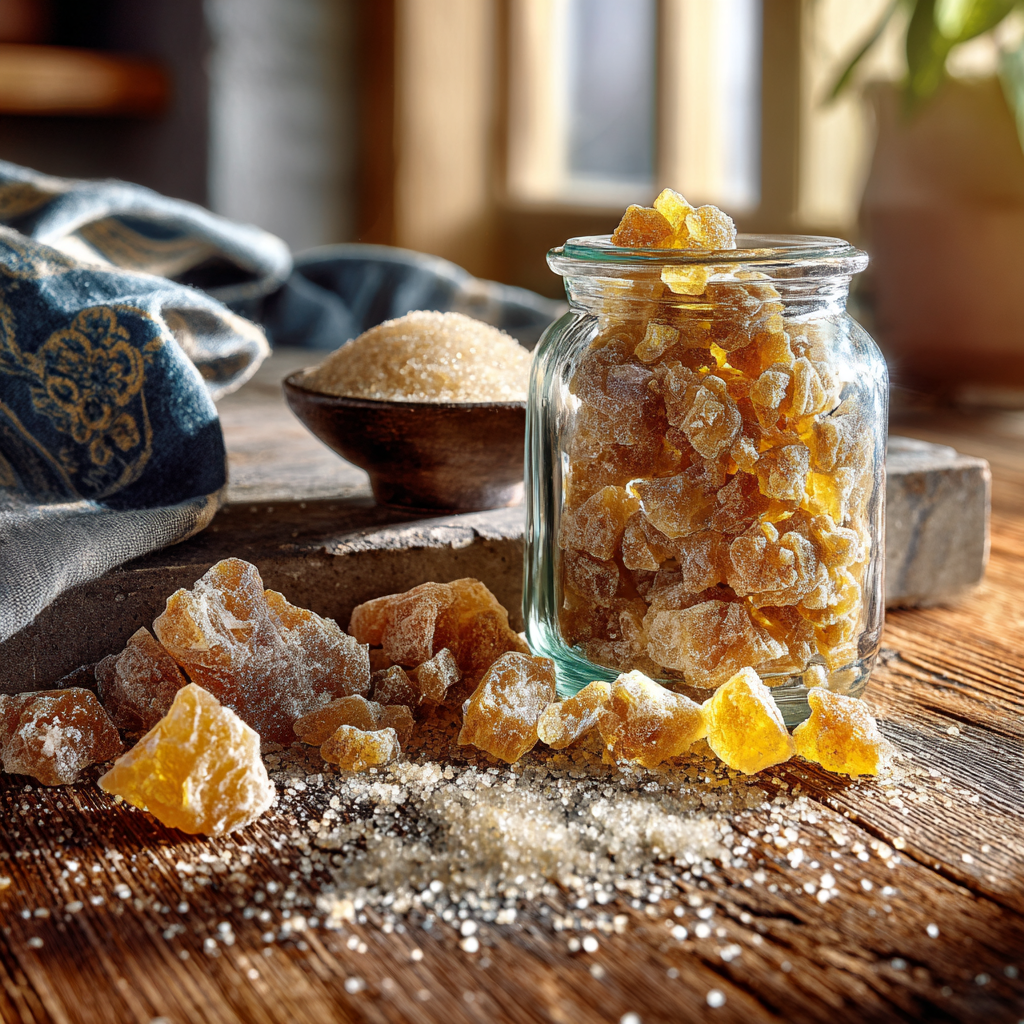Before I knew the word “crystallized,” I knew the flavor. My grandmother always had a little porcelain bowl on her kitchen windowsill filled with golden, sugar-coated nuggets. They sparkled in the afternoon sun, right next to her blooming mint plant. I remember sneaking one after school and being caught off guard by that fiery burst of ginger under the sweet crunch. That was my first introduction to crystallized ginger — and I’ve been hooked ever since.
Crystallized ginger isn’t just candy; it’s comfort, nostalgia, and a little bit of heat all wrapped up in one bite. It’s the kind of thing that perks up a cup of tea or turns a basic muffin into something people rave about. While many see it as a holiday snack, I think it deserves a spot in the pantry year-round.
Making your own crystallized ginger at home takes a little patience, but the reward is worth it. Once you know the basics, you’ll find yourself adding it to cookies, trail mix, even savory sauces. And the best part? It keeps beautifully, meaning a batch can last for weeks—if you can resist eating it all by then.
We’ll walk through exactly how to make it, how it differs from candied ginger, and clever ways to use it in your kitchen. Along the way, I’ll link to some delicious ideas you’ll want to try—like this banana cottage cheese bread or a soft, spiced lemon cream cheese dump cake. Both recipes welcome a pop of ginger.
Making Crystallized Ginger at Home
What You’ll Need and Where to Start
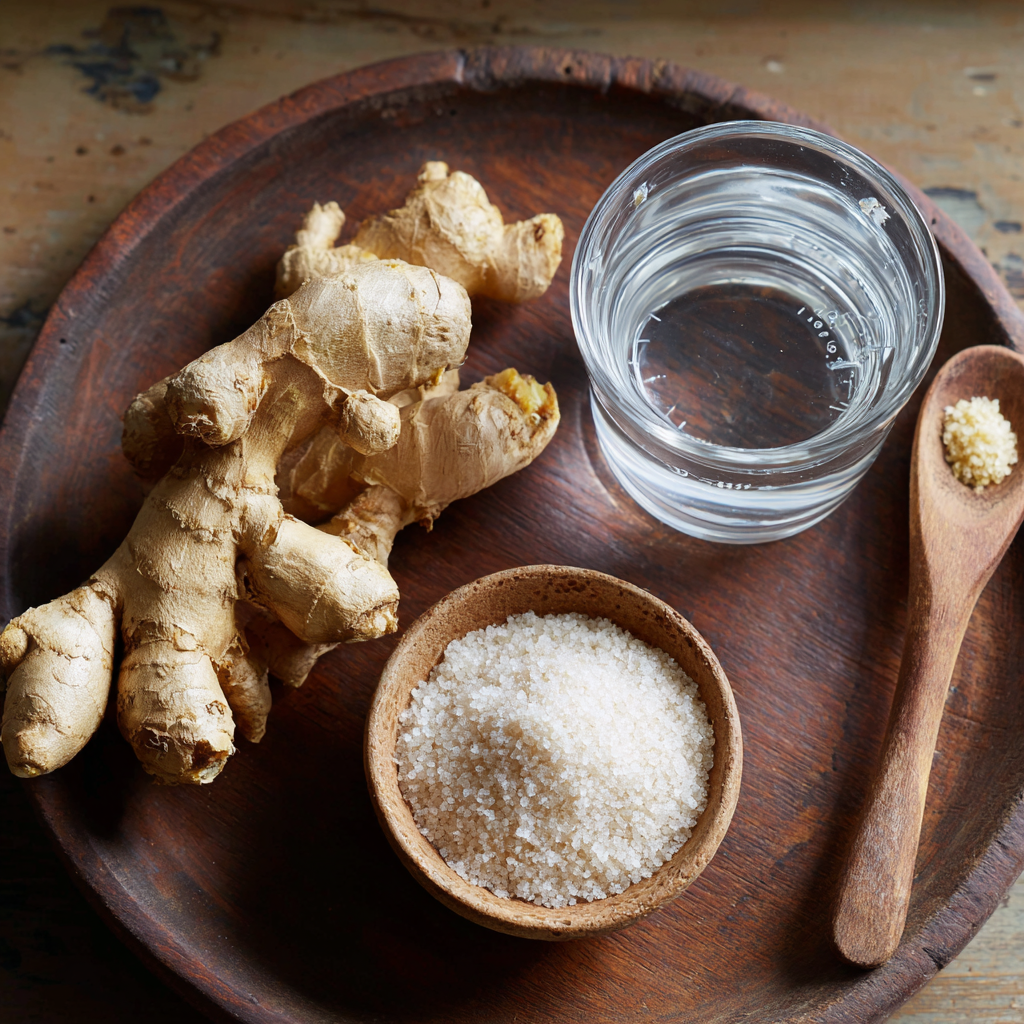
To make crystallized ginger, you only need a few simple ingredients: fresh ginger root, sugar, and water. But the real key? Choosing the right ginger. Young ginger (with smoother skin and less fibrous flesh) gives the best texture—tender yet chewy, not stringy.
Start by peeling the ginger with the edge of a spoon. It’s quicker and less wasteful than a peeler. Then slice it thin—about 1/8 inch works well. Uniform pieces cook evenly and look better when sugared.
Place the slices in a saucepan and cover with water. Simmer them for about 30–40 minutes. This softens the ginger and pulls out some of the harsher bite. Once tender, drain the slices but reserve ½ cup of the cooking liquid—it’ll add flavor to the next step.
In the same pan, combine equal parts sugar and the reserved liquid (usually 1 cup each). Add the ginger slices back in and simmer again until the syrup thickens and the ginger turns translucent. This step takes patience—about 20 minutes—but it’s when the magic happens.
The final step is tossing the warm slices in granulated sugar. Spread them out on a wire rack to dry for a few hours, and you’ve got yourself a batch of homemade crystallized ginger.
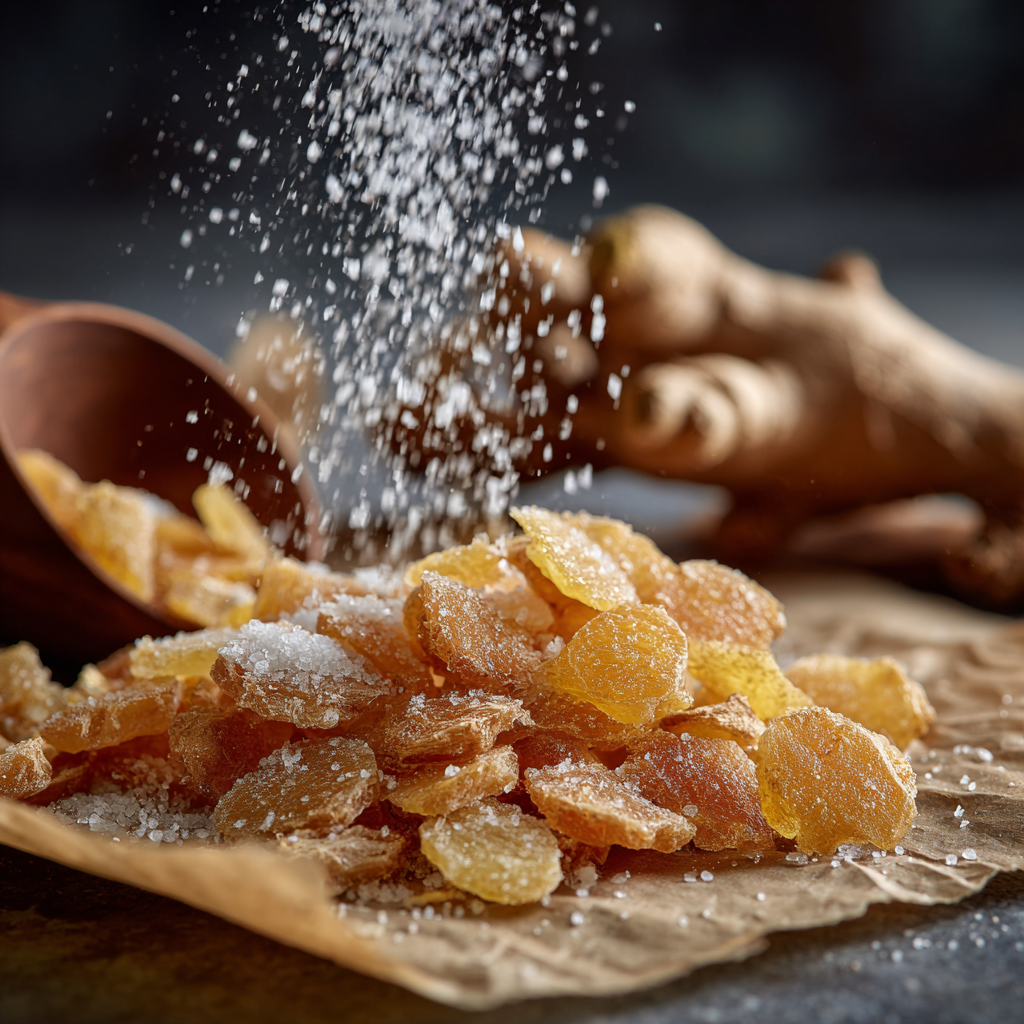
Want to take it further? Try stirring chopped crystallized ginger into cowboy cookies or sprinkling it over a bowl of protein-packed cottage cheese ice cream for a fiery-sweet crunch.
Tips for Perfect Texture and Coating
Getting that classic sugar-crusted finish is all about timing. If the ginger is too wet when you coat it, the sugar melts and clumps. If it’s too dry, the sugar won’t stick. Toss the slices while still slightly sticky—but not dripping.
A light dusting of superfine sugar gives a smooth finish, while granulated sugar offers that iconic crystallized crunch. You can even mix in a pinch of cinnamon or cardamom to play with flavors.
Also, don’t throw out the syrup left in the pot! It’s a spicy-sweet ginger syrup that’s amazing stirred into tea, cocktails, or even drizzled over pancakes. It’s like a hidden bonus from your ginger project.
For gifting, place cooled slices in glass jars or parchment-lined tins. They make thoughtful, homemade treats around the holidays—or anytime someone needs a little pick-me-up.
Print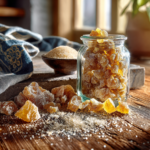
Crystallized Ginger: A Sweet, Spicy Treat with Timeless Charm
- Total Time: 1 hour 10 minutes
- Yield: 1 cup 1x
Description
Sweet, chewy, and spicy—this homemade crystallized ginger is perfect for snacking, baking, or gifting.
Ingredients
1 cup fresh ginger root
1 cup granulated sugar (plus more for coating)
1 cup water
Instructions
Peel the ginger using the back of a spoon and slice into 1/8-inch pieces.
Simmer ginger slices in water for 30–40 minutes until tender.
Drain slices and reserve ½ cup of the cooking water.
Add reserved liquid and sugar to the pot and return ginger.
Simmer until ginger is translucent and syrup thickens (about 20 minutes).
Toss warm ginger slices in extra sugar and spread on a wire rack.
Let dry completely before storing in airtight container.
Notes
Use young ginger for a softer texture.
Dust knife with cornstarch when chopping to avoid sticking.
Store in a cool, dry place up to 3 months.
- Prep Time: 10 minutes
- Cook Time: 60 minutes
- Category: Snack, Candy
- Method: Stovetop
- Cuisine: American
Keywords: crystallized ginger, ginger candy, homemade ginger
Crystallized vs. Candied Ginger
The Real Difference and When to Use Each
A lot of folks use “crystallized” and “candied” ginger interchangeably—but there’s a subtle difference worth noting, especially if you’re baking or gifting. Crystallized ginger is ginger that’s been cooked in sugar syrup, then rolled in sugar and dried. It’s chewy, spicy, and dusted with crystals of sweetness on the outside.
Candied ginger, on the other hand, usually skips the sugar coating. It’s still cooked in syrup, but often left sticky, syrupy, and soft. Think of it like the gooey inside of a gumdrop versus the sugary outside of a jelly bean.
So, when should you use one over the other? Crystallized ginger is perfect for snacking, trail mix, and topping baked goods where you want a little crunch and structure—like on banana bread brownies or peanut butter chocolate chip bites. Candied ginger works better melted into sauces or folded into gooey cookies, where the coating would otherwise melt away.
Which One Is Better for Health and Baking?
From a health angle, both types are still ginger coated in sugar. But the way you use them can make a difference. Crystallized ginger has a bit less moisture, so you can control how much sugar you’re actually eating. It also stores longer and travels well, making it a smart option for DIY snack jars or lunchbox treats.
Ginger itself offers natural anti-inflammatory benefits and can help with nausea, so even when coated in sugar, it’s a smarter sweet than candy bars or gummies. Still, moderation matters. A few slices go a long way.
In baking, crystallized ginger holds its shape better and won’t dissolve into your batter. Try finely chopping it and adding to spice cookies, scones, or even pancake mix for a surprise zing. It’s especially good in dense, rich cakes like butterscotch pie or cherry crumb pie where the spice lifts the flavor.
How to Store and Use Crystallized Ginger
Storing for Freshness & Flavor
Homemade crystallized ginger is best stored in an airtight container once fully cooled and dried. Glass jars work beautifully—not just for keeping it fresh, but also for showing off those sparkling slices. Kept in a cool, dry pantry, it lasts for up to three months without losing texture or flavor.
If your kitchen runs warm or humid, a quick tip is to add a small packet of food-safe silica gel (the kind found in vitamin bottles) to absorb moisture. That way, the sugar coating doesn’t turn sticky over time.
For even longer shelf life, refrigerate it in a sealed container. Just let the ginger come to room temperature before using—it can firm up a bit when cold. Freezing is also possible, but only if it’s packed well and used within a couple of months.
Leftover syrup from the candying process? Don’t toss it! Keep it in a jar in the fridge and drizzle it over pancakes, stir into lemonade, or mix into cucumber mint detox water for a zippy kick.
Smart Uses: Tea, Baking, Gifting
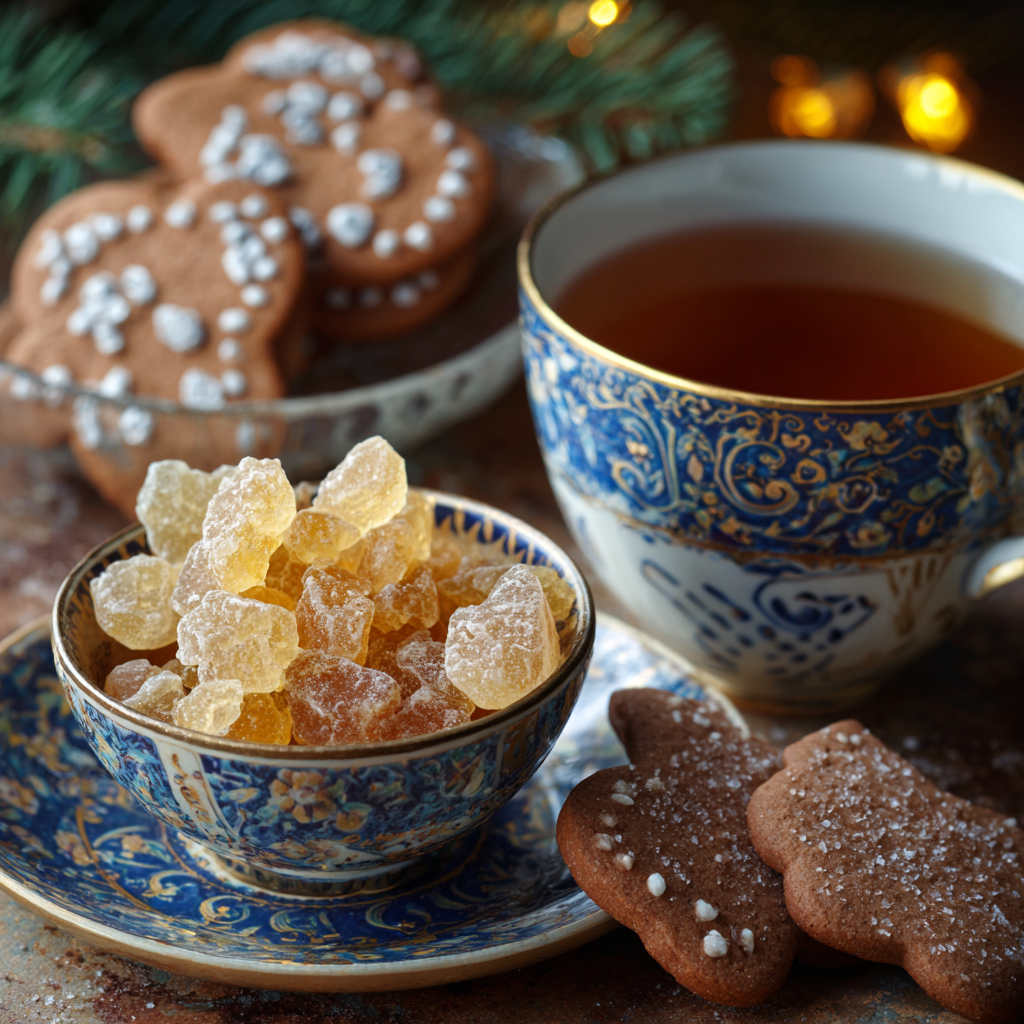
Crystallized ginger adds flavor and warmth in all kinds of ways. Steep a slice in hot water for a homemade ginger tea—perfect on chilly days or when your stomach feels off. Chop it into oatmeal, blend it into smoothies, or pair it with citrus in muffin batter.
If you’re into quick breads or dump cakes like this strawberry cheesecake dump cake, tossing a handful of chopped crystallized ginger into the batter brings a new depth of flavor.
It also makes for a thoughtful gift. Wrap in parchment paper or pop into small mason jars with ribbon for a homemade treat that feels both rustic and special. Add a tag with your favorite serving suggestion—like pairing it with dark chocolate, or serving it alongside a slice of banana cottage cheese bread and a mug of tea.
Faqs
What is the difference between candied ginger and crystallized ginger?
Though often confused, they’re slightly different. Candied ginger is cooked in sugar syrup and usually left sticky without a sugar coating. Crystallized ginger goes one step further—it’s rolled in sugar after cooking, giving it that dry, sparkly finish and a chewier texture. Crystallized ginger is ideal for snacking or topping baked goods, while candied ginger melts nicely into sauces or syrups.
Is eating crystallized ginger healthy?
In moderation, yes. Ginger itself has natural anti-inflammatory and digestive benefits, and it can help ease nausea or motion sickness. According to Healthline, ginger has been linked to reduced muscle pain, improved digestion, and more. However, crystallized ginger is also coated in sugar, so it’s best enjoyed as an occasional treat. Compared to many store-bought sweets, though, it’s a better option—especially when made at home.
What is the best way to chop crystallized ginger?
Use a sharp knife and a little cornstarch or flour to keep it from sticking. Crystallized ginger can be sticky to slice, so dusting the pieces helps prevent clumping and mess. For recipes like muffins or cookies, chop it finely into ⅛-inch pieces to distribute the flavor evenly without overwhelming each bite.
Conclusion
Crystallized ginger is one of those humble treats that packs so much character into every bite. It’s sweet, fiery, chewy, and just fancy enough to make a plain afternoon feel a little special. Whether you’re making it for the first time or rediscovering it from childhood memories like mine, the process is simple and the reward is rich in flavor and nostalgia.
You don’t need fancy tools or hard-to-find ingredients—just good fresh ginger, a little patience, and a warm kitchen. Once you’ve got a jar ready, you’ll find all sorts of ways to use it—from jazzing up cookies to sipping it in tea or pairing it with other comforting desserts like banana bread brownies or a cozy lemon cream cheese dump cake.

